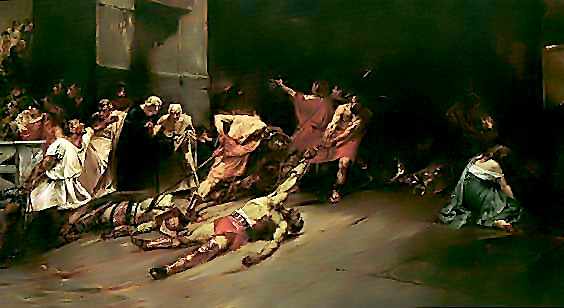Tips in Painting on Large Canvases

Many artists dream of painting on a bigger canvas. If you have an idea or inspiration that cannot be captured on standard size canvases, going big is your way to go. However, if you’ve never painted on a large canvas, you can be intimidated and overwhelmed with the thought of creating big-scale art. Here are some tips that can help you overcome your fears on painting big.
Tip #1. Gradually paint on bigger canvases. Help your mind, eyes, and hands to adjust painting on a large canvas. Every couple of weeks or so, try to paint on a canvas which is bigger than the previous one you used. This practice will help you get comfortable and get used to painting big. With a small canvas, you’re working on a limited space so the details are smaller, lines are finer, and you finish quicker than painting on large-scale canvases so, you may have to practice your brush strokes little by little until you reach your desired canvas size. Learn from your mistakes and correct them along the way. Don’t be in a rush to work on a large canvas.
Tip #2. Know the scale of the painting. Are you using a big canvas to fill it with small details of a complex subject (e.g. historical event) or are you painting a big-scale of a small subject (e.g. portrait, nature). Find the balance among the subject, the size of the canvas, and your painting style. Remember, just because the painting is bigger, doesn’t mean it’s better than ordinary size painting. Some subjects are perfect for larger canvases while some are best with small canvases.
Tip #3. Use bigger brushes. Bigger brushes will help you finish the painting faster. You can cover larger areas of the canvas and you can loosen up a bit when painting, like a child painting freely on the wall. Stand back from the canvas and see if you’re on the right track. You can still use small brushes, though, if you’re more comfortable with them and if the style of your painting requires them.
Tip #4. Divide the canvas into sections. Working on a big painting can be overwhelming. Using your sketch as guide, try to divide the canvas into sections and do one section at a time until you finish the whole painting. You can also try breaking down the elements of the painting and before you know it, you’re on your last brush strokes in this painting.
Tip #5. Be patient. Since you’re painting on a large canvas, naturally, it will take more time to finish and to dry, so be patient. If you’re an artist who get bored easily or can’t delay gratification, then creating large-scale paintings is not for you.
Image source: www.wikipedia.org